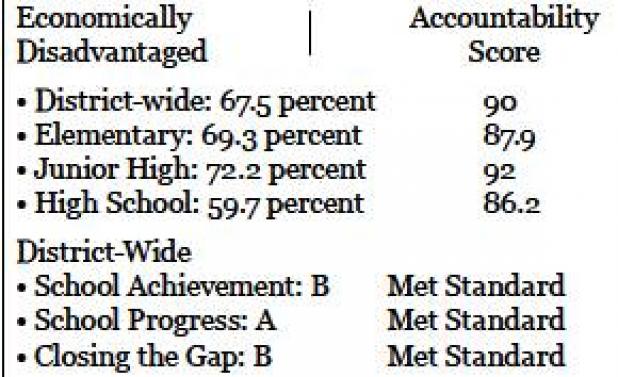
OISD excels on state accountability rating
Olney Independent School District (OISD) received high marks on the Texas Education Agency’s 2018 State Accountability Rating system. OISD Superintendent Dr. Greg Roach provided a summary of the OISD’s ratings as follows:
• Olney was one of three (8.1 percent) to receive an “A” rating, out of the 37 districts in Region 9.
• Olney ISD was one of 121 districts (12.8 percent) to receive an “A” rating, out of the 1023 noncharter public schools in Texas.
• Olney Elementary earned five of six possible distinctions.
• Olney Junior High earned six of seven possible distinctions.
• Olney High School earned five of seven possible distinctions.
• Olney ISD earned the highest percentage of possible distinctions of the three school in the region that received an “A” rating.
• Olney ISD earned the most distinctions of 1A, 2A, 3A or 4A district in Region 9.
Last year, a projected for the district was a “B” rating, and four years ago, the Junior High received an “improvement required” status.
The Texas Education Agency said parents are encouraged to visit TXschools.org to view online report cards. The report cards are designed to be useful tools in seeing how a school or school district is doing in different areas, as well as spotlight specific strengths, in addition to any challenges, that can assure the needs of all students are being met.
Parents can search by district or school name and compare that district’s or school’s performance to others in their area.
Districts receive a grade or rating based on performance in three areas:
• Student Achievement measures what students know and can do by the end of the year. It includes results from state assessments across all subjects for all students, on both general and alternate assessments, College, Career, and Military Readiness (CCMR) indicators, like AP and ACT results, and graduation rates.
• School Progress measures how much better students are doing on the STAAR test this year versus last year, and how much better students are doing academically relative to schools with similar percentages of economically disadvantaged students.
• Closing the Gaps looks at performance among student groups, including various racial/ ethnic groups, socioeconomic backgrounds and other factors.
70 percent of the accountability rating is based on the better of Student Achievement or Student Progress (whichever is better is the only performance measure counted in the calculations). The remaining 30 percent is based on performance in the Closing the Gaps area.
To learn more about the A–F accountability system, visit https://tea.texas.gov/A-F/.
“Achieving an ‘A’ rating reflects the hard work and commitment of everyone within a school district, starting with our classroom teachers,” Commissioner of Education Mike Morath said in a press release. “We should all celebrate the outstanding work of these dedicated educators. Districts with high levels of poverty who attain this high level of performance are proof positive that poverty is not destiny. With strong instruction and curriculum, all students can succeed.”
